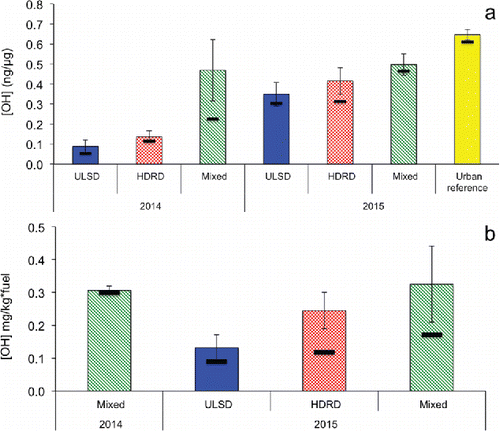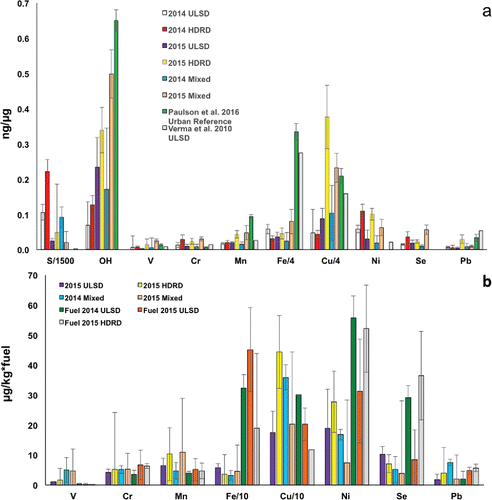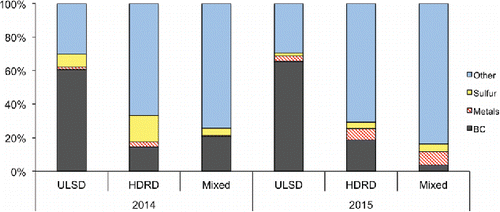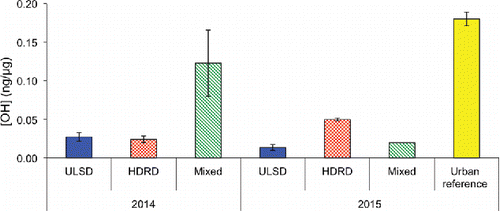Figures & data
Table 1. Number of samples analyzed for ULSD and HDRD in 2014 and 2015 cruises. Numbers in parentheses indicate the number of metal samples analyzed and bolded values indicate average aerosol mass in mg.
Figure 1. (a) Average (color bar), median (black horizontal bar), and standard errors (vertical error bars) of OH (ng/µg PM) production by year and fuel (1a) and average and standard error of OH (mg/kg•fuel) in (b). ULSD and HDRD are the samples from engine cycle tests, with all of the engine speed combined.

Figure 2. (a) ICP-MS/MS concentrations of water-soluble transition metals in the exhaust PM (in ng metal or element/µg PM), S and Se in the ship samples, an urban data set (Paulson et al. Citation2016) and in diesel engine exhaust (Verma et al. Citation2010). All samples were extracted in SLF solution (see the text) except Verma et al. (Citation2010), who used water. Note that there are somewhat fewer samples with metal analysis than OH (), thus the average OH generation for the corresponding sample set is included here. (b) Concentrations of water-soluble transition metals in the ship exhaust (µg metal per kg of fuel burned) and in the fuels (µg metal per kg of fuel).

Table 2. Cross correlations between elements (r2 values), mass normalized in ng/μg. Significant correlations (p < 0.05) are in bold; italic values indicate a group of metals that all have significant correlations with one another. n indicates the number of samples.
Table 3. Correlations between OH and metals mass normalized in ng/μg. Bolded values indicate the significant correlations with p values < 0.05. Italic values indicate that outliers (one for Fe, two each for Ca and Co) were removed. Outliers are defined as the values at least three times higher than the next highest value.
Figure 3. Median chemical composition of different sample types. Total “Metals” includes 13 metals and Se, but was dominated by Mg, Ca, and Zn (Table S2). BC mass concentrations in all 2014 samples were measured with an Aethalometer (Paulson et al. Citation2016) and BC mass concentrations in 2015 samples were measured with an SP2 (Betha et al. Citation2017).

Figure 4. Average and standard error of OH production divided by fuel and year in pH 3.5. The 2015 mixed bar contains only one data point, and 2014 contains two.

